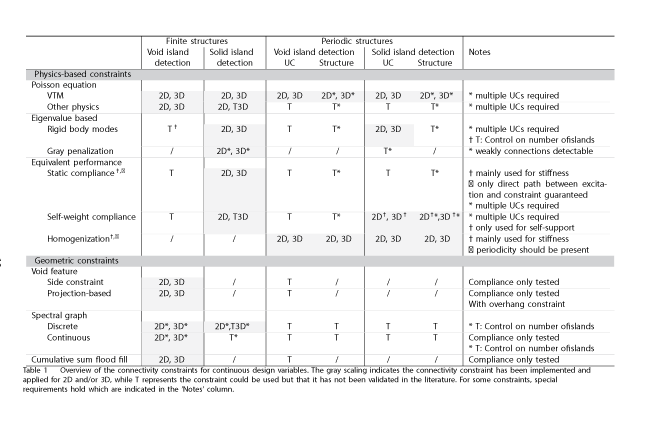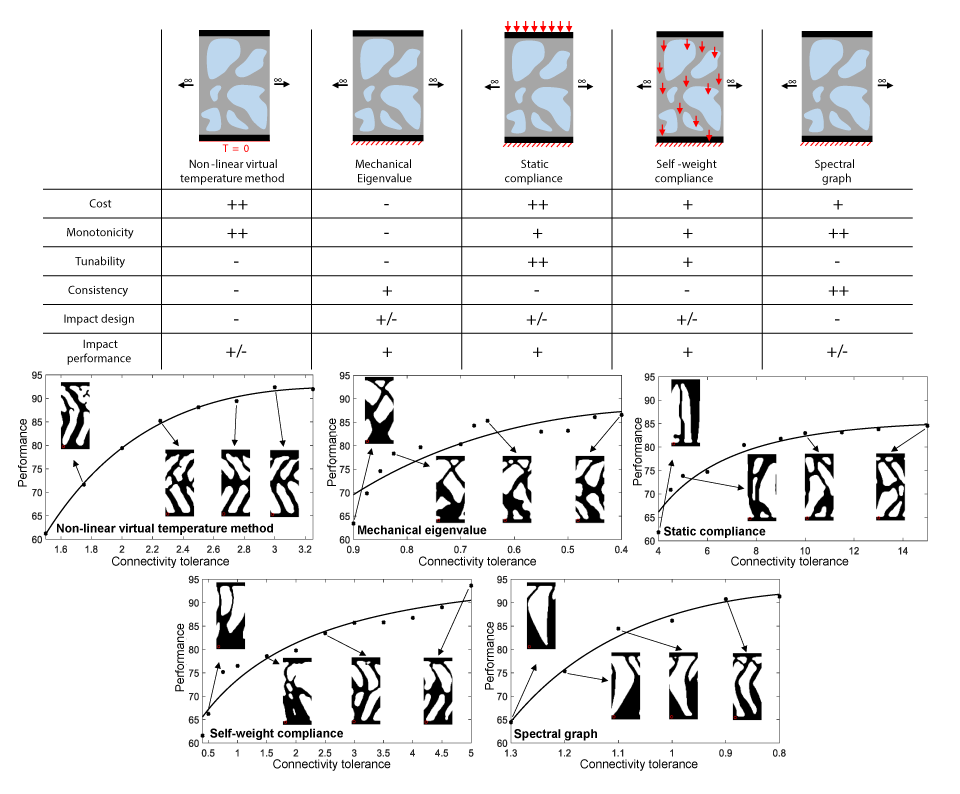Enhancing Structural Design: A Practical Review on Promoting Connectivity in Topology Optimization
- Rafal Tekreeti

- Jul 17
- 3 min read
By: Vanessa Cool, Niels Aage, Ole Sigmund

Topology optimization revolutionizes the way engineers and designers approach structural design. By automatically determining the most efficient distribution of material within a given space, topology optimization enables the creation of lightweight, high-performance structures that often outperform traditional designs in strength, stiffness, and material efficiency. It serves as a cornerstone in aerospace, automotive, and civil engineering, offering unprecedented freedom to explore novel and non-intuitive design solutions.
However, the full potential of topology optimization is often hindered by a persistent and critical challenge: poor structural connectivity in the optimized results. Without sufficient connectivity, optimized designs can suffer from fragmented regions, unsupported members, or isolated features (Fig. 1) —making them not only difficult or impossible to manufacture but also structurally unreliable. This issue becomes particularly problematic in practical applications, where continuity and robustness are essential for load transfer, durability, and safety.

Our recent work addresses this challenge by offering a comprehensive and practical review of methods designed to promote connectivity in topology optimization. Through a systematic analysis and comparative evaluation, we aim to bridge the gap between the theoretical optimization and the real-world manufacturing connectivity requirement, providing valuable guidance to both researchers and practitioners in the field.

Key findings
The work first reviews all existing connectivity-enforcing methods in the current state-of-the-art. We categorize and evaluate the existing methods that aim to promote connectivity and divide them into physics-based and geometry-based methodologies (Fig. 2). Secondly, a practical comparison between the key connectivity methodologies is performed on a vibro-acoustic case study where both structural and acoustic performance are of importance. Based on our analysis, we are able to provide guidelines on selecting appropriate connectivity enhancement methods depending on the specific requirements and constraints of the design problem. With Pareto-graph studies, the constraints are evaluated based on computational cost, monotonicity, parameter dependency, and their impact on the optimized designs, their performance, and underlying dynamics (Fig. 3). From the comparison, practical insights and rule of thumbs emerge. The findings emphasize the critical role of selecting appropriate connectivity constraints, given their significant effect on the optimization results.

Role of high-performance computing
The evaluation of various connectivity constraints involves extensive computational experiments. Utilizing high-performance computing resources, such as those provided by VSC, allows us to perform large-scale simulations and analyses efficiently. The computational power facilitates the efficient comparison of the different methods, leading to robust and generalizable conclusions.

Implications and future work
Improving connectivity in topology optimization has significant implications for the practical application of topology optimization in engineering design. By ensuring that optimized structures are both efficient and manufacturable, these methods bridge the gap between theoretical optimization and real-world implementation. Our work serves as a practical guideline for practitioners to choose the appropriate connectivity constraint for their application and gives inspiration for future research on advanced techniques that can automatically enforce the connectivity during the optimization.
Read the full publication in Springer Nature here
🔍 Your Research Matters — Let’s Share It!
Have you used VSC’s computing power in your research? Did our infrastructure support your simulations, data analysis, or workflow?
We’d love to hear about it!
Take part in our #ShareYourSuccess campaign and show how VSC helped move your research forward. Whether it’s a publication, a project highlight, or a visual from your work, your story can inspire others.
🖥️ Be featured on our website and social media. Show the impact of your work. Help grow our research community
📬 Submit your story: https://www.vscentrum.be/sys




